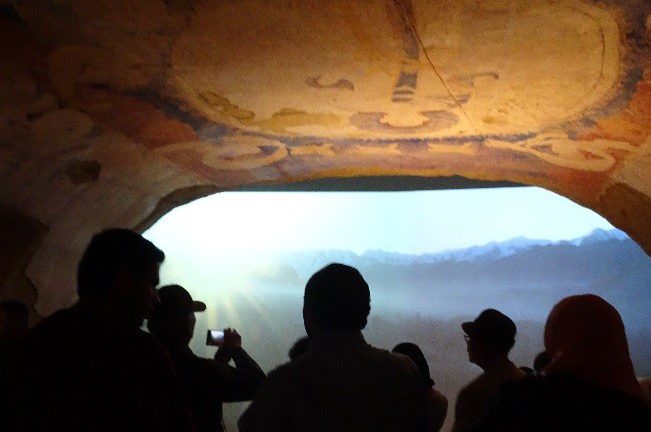JICA研修員による本学COI拠点制作「クローン文化財」の視察JICA trainees visited the displays of “Clone Cultural Properties” produced by the COI site
October 30, 2017
[:ja]10月18日(水)、独立行政法人国際協力機構(JICA)が実施する研修員受入事業の研修員グループが本学を訪れ、本学COI拠点制作の「クローン文化財」を視察しました。本研修には、アルジェリア、エジプト、ヨルダン、パレスチナ、スーダン、スワジランドといった中東・アフリカ地域の政府系機関で観光政策に携わる職員計11名が参加しました。
小林社会連携課長からの歓迎の挨拶に続いて、剱持リサーチアドミニストレーター(URA)より、COI拠点がこれまでに取り組んできた「クローン文化財」のプロジェクトについて、ビデオ上映を交えながら紹介がありました。本学COI拠点が産み出す高精細複製文化財「クローン文化財」は、デジタルとアナログ(伝統技法)の技術の掛け合わせにより作られること、また製作される作品は、単なるコピーやレプリカではなく、日本で根付いている「模写」という文化に則り、オリジナルの技巧や精神性を未来に受け継ごうとするものであるというコンセプトが説明されました。
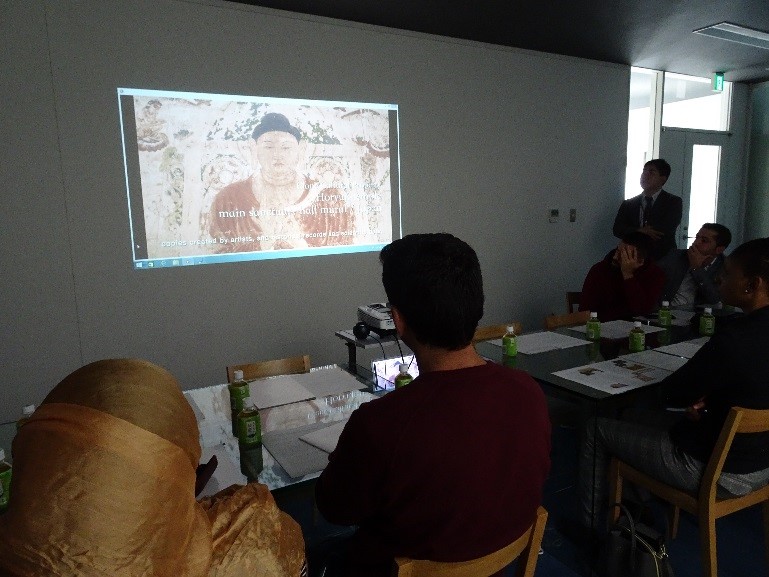
その後一行は、制作の現場を視察しました。剱持URAより、質感の再現だけでなく顔料もオリジナルと同じものを使用していること、最終的には芸術家の手により仕上げが行われることなどが説明され、それが伝統や民族アイデンティティの継承に繋がることが伝えられました。「触ってもよい」ということがわかると、研修員たちは積極的に作品の質感や色味を確かめていました。

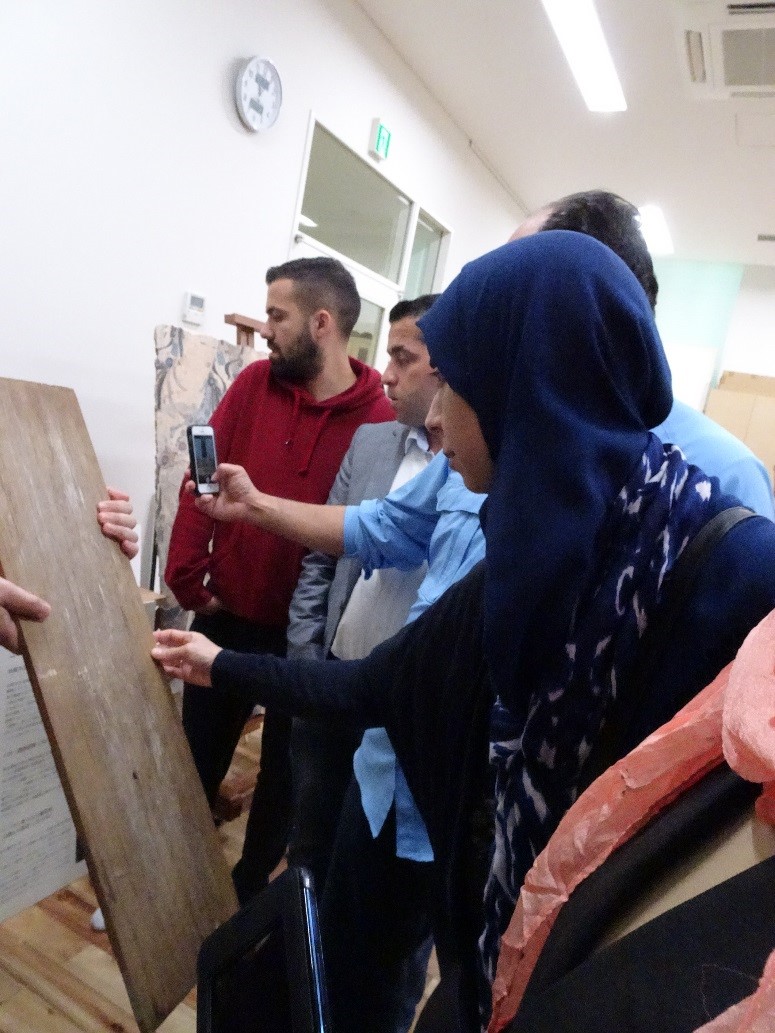
次に視察した球形シアターでは、半ドーム型のスクリーンに映し出された3D映像を鑑賞しました。研修員たちは、拡大して立体的に映し出された「バベルの塔」の迫力に圧倒されているようでした。
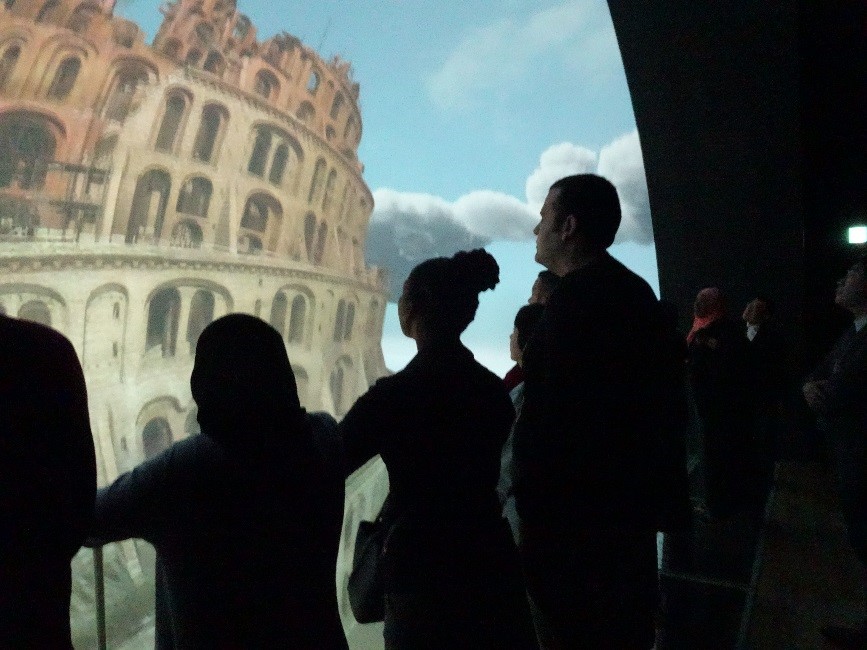
最後に研修員たちは、現在大学美術館で開催中の世界初のクローン文化財のみによる展覧会、シルクロード特別企画展「素心伝心-クローン文化財 失われた刻の再生」を鑑賞しました。様々な理由により傷つき、あるいは失われた文化財の再現を目の当たりにして、自国の文化財の復元の可能性を「クローン文化財」に見いだそうとする研修員もいました。
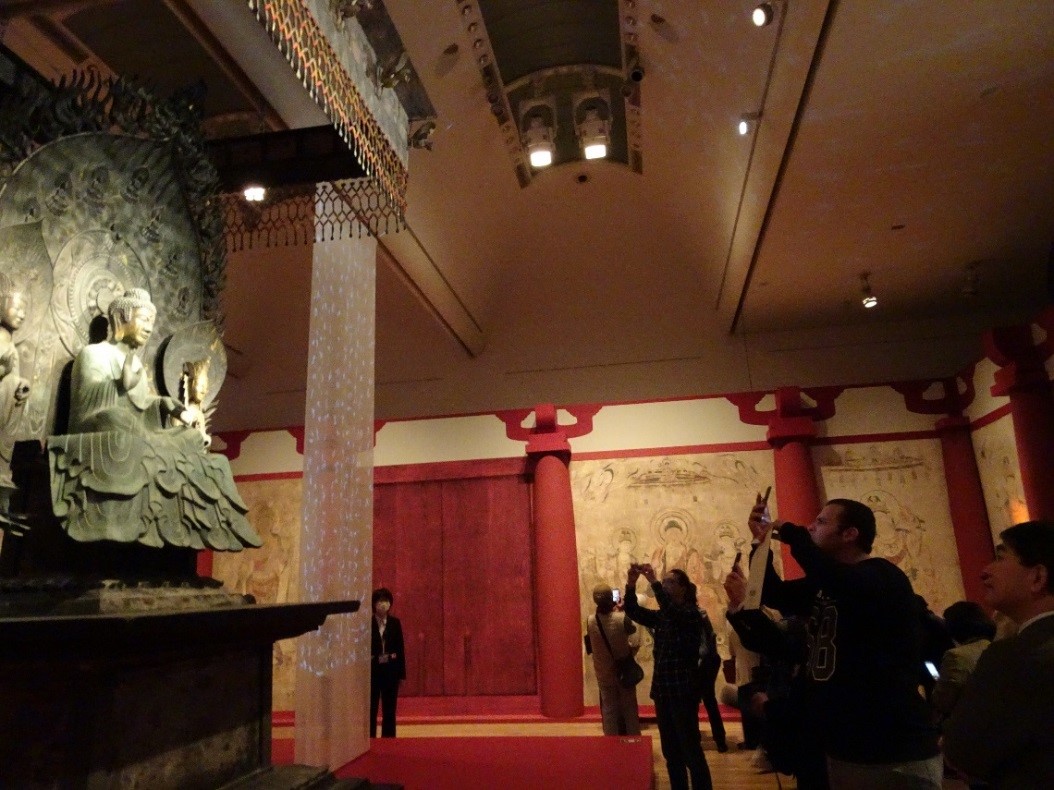
この研修を通じて、研修員たちとCOI拠点関係者は、文化財の継承は文化的アイデンティティの継承であるという認識を共有することができました。文化財は人類共通の財産という理念の下、東京藝術大学は今後も「クローン文化財」のような研究成果を国内外に発信していきます。[:]
On October 18, 2017, a total of eleven participants of a training program by Japan International Cooperation Agency (JICA) visited Tokyo University of the Arts (Tokyo Geidai) to take a tour of the cultural properties that were “cloned” at the Tokyo University of the Arts COI site. The trainees are from government tourism organizations in Algeria, Egypt, Jordan, Palestine, Sudan, and Swaziland.
Following the welcome remarks by Manager of the Public Collaboration Division Katsuo Kobayashi, Dr. Yukio Kenmochi, who is a University Research Administrator (URA) at Tokyo Geidai, introduced the projects on “Clone Cultural Properties” that the COI site has implemented so far, showing a video on those projects. Dr. Kenmochi explained that high-definition “Clone Cultural Properties” are produced with a blend of digital technologies and traditional art techniques. Such cloned art works are not mere copies or replicas of the originals. Rather, they are produced with the aim of passing down the techniques and spirituality of the originals to the next generation, while following the Japanese traditional culture of “mosha (reproduction)”, he added.

After the introduction, the group of the JICA trainees visited the laboratory where cultural properties are reproduced. They learned from Dr. Kenmochi that such art works, which are manually finished by artists, not only have the same textures but also use the same pigments as the original works, thereby attempting to inherit the tradition and ethnic identity of the originals. As they were told that they could touch some cloned cultural properties, they enjoyed the reproduced textures and colors.


At the dome theater, which the group visited next, they seemed impressed by a 3D image of the Tower of Babel originally painted by Peiter Bruegel, which had been enlarged and projected on a half-dome shaped screen.

Before departure, the JICA trainees visited the University Museum to see The Grand Exhibition on the Silk Road, SOSin – DENSin, Clone Cultural Property: Revitalization of Lost Time, which is the world’s first exhibition consisting of cloned cultural properties only. Facing the cultural properties whose originals were damaged or lost for various reasons, some trainees saw the prospects for the reconstruction of their own national cultural assets.

Through this visit, the JICA trainees and the COI staff members were able to share a recognition that the succession of cultural property means the succession of cultural identities. Standing by the principle that cultural properties are the common heritage of mankind, Tokyo Geidai is committed to keeping delivering research outcomes such as cloned cultural properties both in Japan and overseas.


